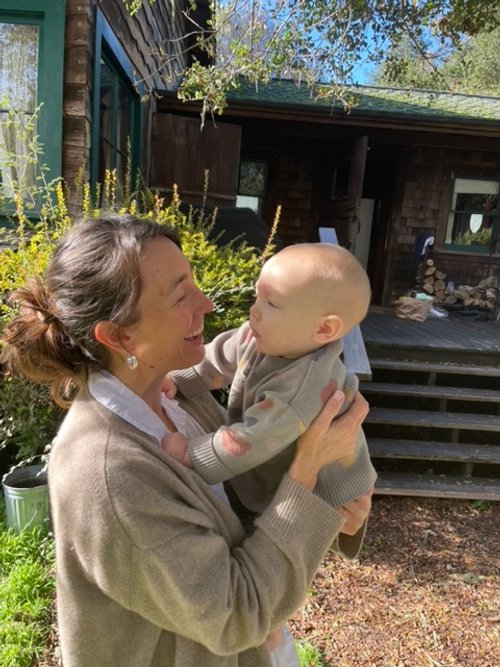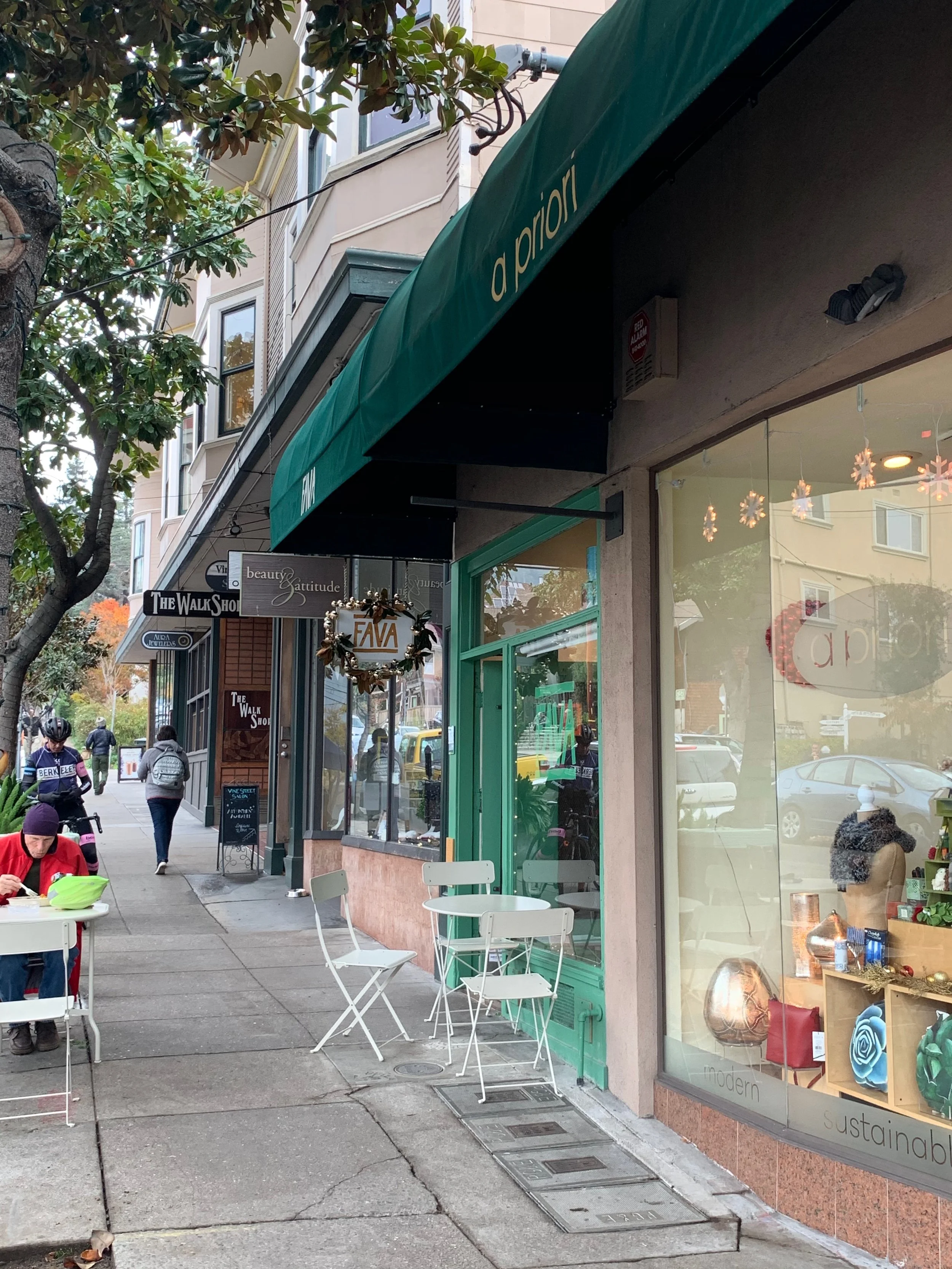Well-Being and Connection to Place
Hannah and her grandson outside her home
This post is part of Profiles in Living Connected to Place, a series by Matt Biggar, Ph.D., that portrays individuals living connected to place with intention and the support of systems that make it possible. Prior posts can be found here.
Hannah Love has lived in Berkeley, California, almost her entire life. Her children attended the same schools that she and her parents did. She lives with her family in a home that originally belonged to her great-grandmother. Her North Berkeley neighborhood is her extended home with a tight network of family and friends. She has worked at the local university and a local nonprofit within walking distance of her home. Hannah is involved in the local food community and feels a special affinity for Bay Area institutions. Hannah is deeply connected to her place.
I met Hannah at a small café serving fresh local fare a couple blocks from her home. When she entered the café, the employees greeted her as a close friend, asking about mutual friends and a recent trip. I soon learned that these relationships were typical of her daily life and that she had many such connections through local businesses, the farmers’ market, and elsewhere in her neighborhood.
Local farmers market in Hannah’s neighborhood
Sharing space with people in her place, engaging in local activities, and understanding the systems and forces that make the place what it is enhance connectedness, happiness, and meaning in Hannah’s life. She reveres the first people of this place, the Ohlone, and their past and current ways of living that promote abundance. This helps motivate her to live lightly and in balance with nature, adding deeper satisfaction to her life.
Hannah finds well-being through regular experiences with nature, community, family, and friends in her local context. She can immerse herself in nature in a nearby regional park and several smaller parks, all within walking distance. Like all of us, Hannah feels the pull of digital technology in her life but has also found ways to limit screen time. She prioritizes regular time for in-person conversations and connections. With nearby amenities such as a public library, cafes, a variety of retail stores and museums, Hannah has found many ways to spend time locally.
She commuted by car in the past and is glad that is no longer part of her daily life. When she needs to get somewhere that is not within walking distance, she uses her family’s electric car or an electric bike.
Hannah’s local orientation applies to her consumption of goods and services. The city of Berkeley allows residents like Hannah and her family to buy from a community choice energy provider that generates electricity from renewable energy projects, mostly within California and including ones in the local county. She shops for almost all her food in her neighborhood, benefitting from a variety of food specialty stores as well as a larger market that features organic produce from local farmers. Hannah’s dad ingrained in her the importance of buying quality household items, often from local businesses, that may cost more upfront but last longer and save money over time.
Local business district in Hannah’s neighborhood
Her family’s favorite vacation spot is in her local region, a forested area near the beach and a little more than an hour’s drive away. Hannah calls it her “favorite place on earth” and cherishes the “ritualized outing that [she] shares with her family” every summer.
Toward the end of our conversation, Hannah reflected on the joy she experiences from varied local activities that range from hikes in nature to being resourceful – for instance, by using everything in the fridge. Her lifestyle demonstrates how living connected to place supports personal well-being and, at the same time, aligns with community and environmental well-being.
Hannah benefits from privilege while seeking to live in ways that do not further privilege herself. The City of Berkeley, like most cities in America, has a history of residential segregation by race. Through restrictive covenants and redlining practices, Black and other people of color were excluded from living in neighborhoods like Hannah’s and thus unable to build wealth through property ownership over multiple generations. The availability of fresh, local food is another reflection of neighborhood-based privilege that benefits Hannah and her family. Hannah tries to limit furthering her privilege by frequently spending time in the community, having minimal material goods, and working at organizations that promote public good and social justice.
Hannah lives with intention to benefit personal, community, and environmental well-being. Her place-based ways of living would not be possible, however, without supportive systems. Nearby work opportunities, nature, community space, shopping, food production, and travel destinations provide a context that enables Hannah to live connected to place. Community choice energy, pedestrian and bike infrastructure, and living in a city that values these things further support a place-based lifestyle. Hannah shows how living connected to place is desirable, beneficial to the greater good, and possible with supportive systems.
The systems that shape our lives and are explored in the rest of this series include housing, work, transportation, community space, nature space, food, building energy, water, consumer goods, travel, children and youth recreation, and education.



